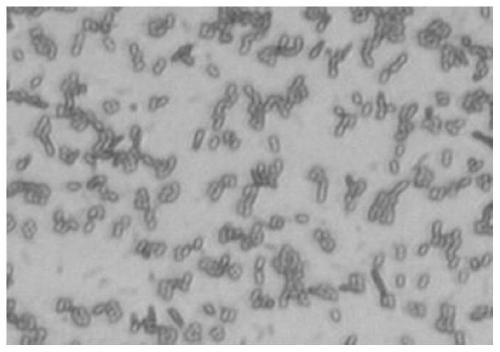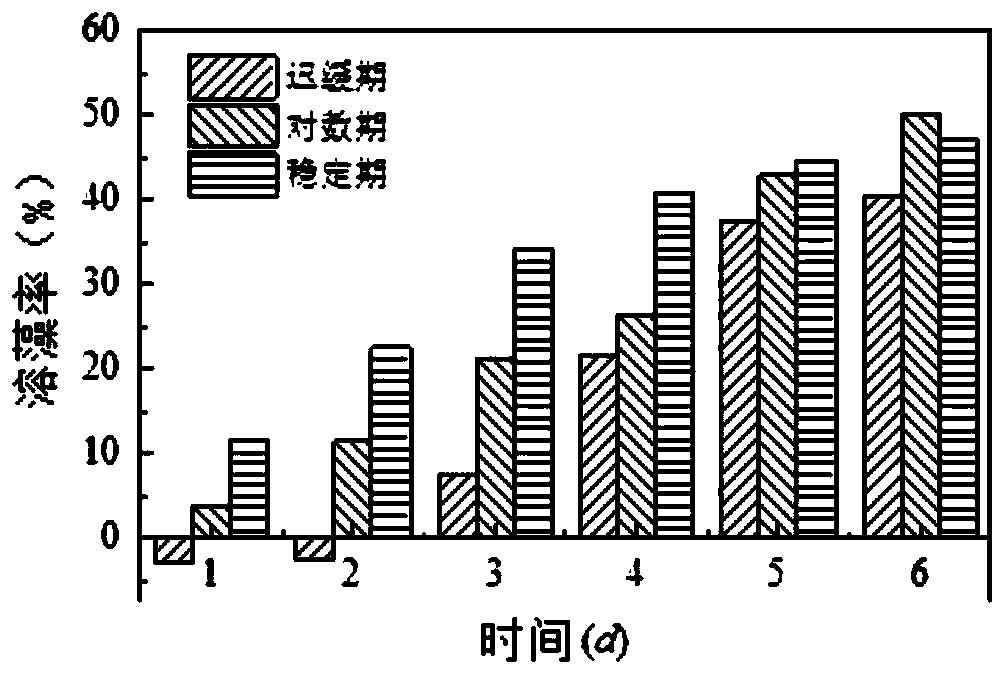Algicidal bacteria, screening method and application
A technology of algae-dissolving bacteria and algae-dissolving technology, which is applied in chemical instruments and methods, methods based on microorganisms, biochemical equipment and methods, etc., and can solve the problems of failure to rule out the influence of culture medium, ecological adaptability and application value of algae-dissolving bacteria. Considering other issues, to achieve the effect of simple and feasible method, high safety and good ecological adaptability
- Summary
- Abstract
- Description
- Claims
- Application Information
AI Technical Summary
Problems solved by technology
Method used
Image
Examples
Embodiment 1
[0048] In order to investigate the effect of different ages of bacteria on the algicidal effect of XXG strain, 5.6 mL of XXG bacterial suspension in lag phase, logarithmic phase, and stable phase were respectively inoculated into aeruginosa microbes containing 100 mL of Chl-a with a concentration of 1294.22 μg / L. The algae liquid was shaken in the Erlenmeyer flask for 6 days, and the algae lysis rates were 40.28%, 50.13%, and 47.19% after 6 days. Thus it can be seen that the algicidal effect of the bacterial strain in the logarithmic phase is better than that of the bacterial strains in other phases (see image 3 ).
Embodiment 2
[0050] In order to investigate the effect of different concentrations of Microcystis aeruginosa liquid on the algicidal effect of XXG strain, 5.6mL of XXG bacterial suspension in the logarithmic growth phase were inoculated in 100mL Chl-a concentration of 659.68μg / L, 1294.22μg / L, respectively. L and 4259.88μg / L Microcystis aeruginosa liquid were shaken in Erlenmeyer flasks for 6 days, and after 6 days, the algae lysis rates were 77.1%, 50.13%, and 18.60%, respectively, after converting the Chl-a concentration in the Microcystis aeruginosa liquid Respectively decreased 508.61μg / L, 648.79μg / L, 792.33μg / L (see Figure 4 ). It can be seen that the lytic ability of XXG strains to Microcystis aeruginosa increases with the increase of the number of Microcystis aeruginosa.
Embodiment 3
[0052] In order to investigate the effect of different volume ratios of bacteria and algae on the algicidal effect of the XXG strain, the XXG bacterial suspension in the logarithmic growth phase was inoculated into the Erlenmeyer flask containing 100 mL Chl-a concentration of 1294.22 μg / L Microcystis aeruginosa liquid Medium shaking culture for 6 days, the volume ratios of bacteria and algae were 5.0%, 5.2%, 5.4%, 5.6%, 5.8%, 6.0%, and the algae dissolution rates after 6 days were 36.03%, 41.66%, 42.24%, 50.13%, 44.56%. , 47.09% (see Figure 5 ).
PUM
 Login to View More
Login to View More Abstract
Description
Claims
Application Information
 Login to View More
Login to View More - R&D
- Intellectual Property
- Life Sciences
- Materials
- Tech Scout
- Unparalleled Data Quality
- Higher Quality Content
- 60% Fewer Hallucinations
Browse by: Latest US Patents, China's latest patents, Technical Efficacy Thesaurus, Application Domain, Technology Topic, Popular Technical Reports.
© 2025 PatSnap. All rights reserved.Legal|Privacy policy|Modern Slavery Act Transparency Statement|Sitemap|About US| Contact US: help@patsnap.com



